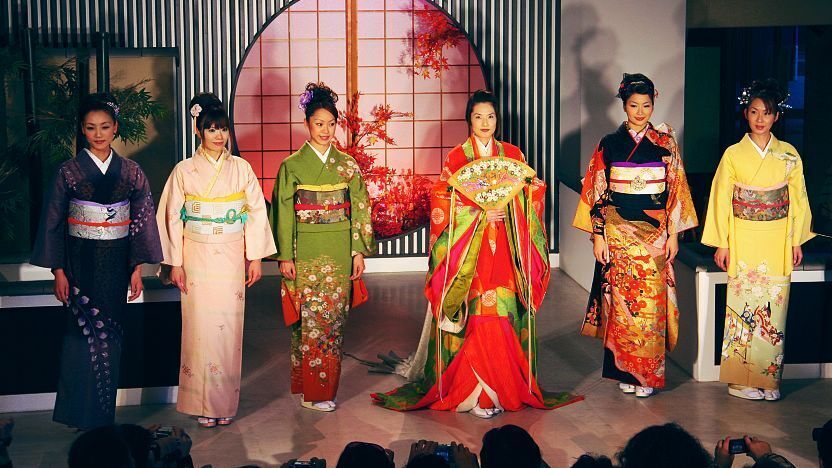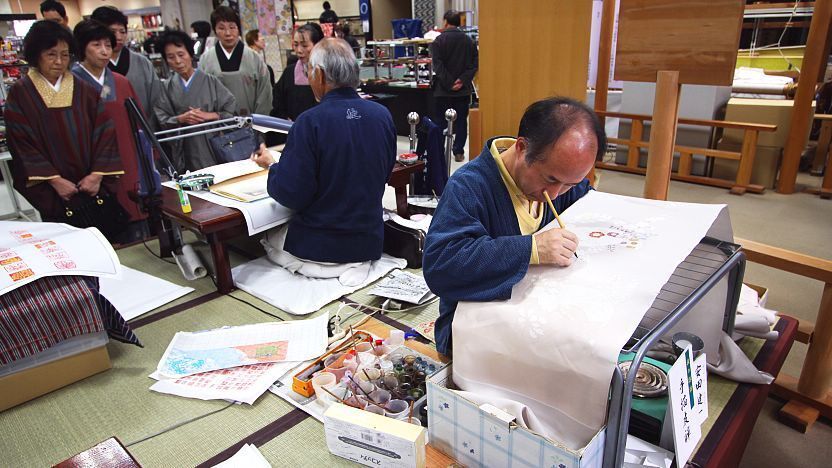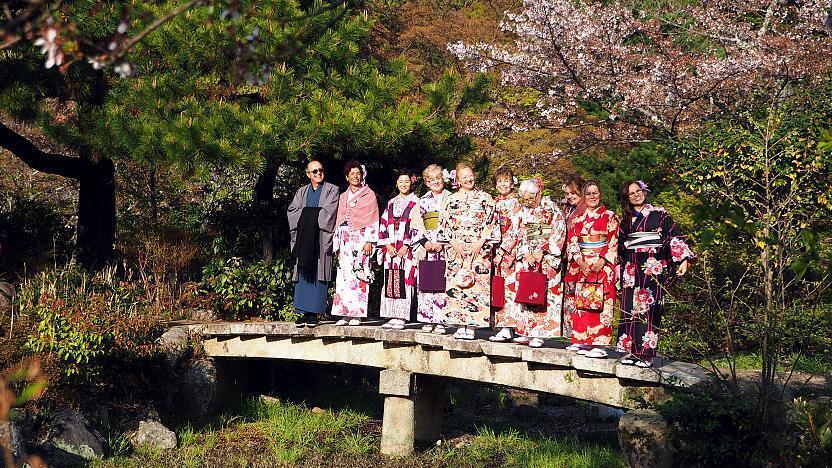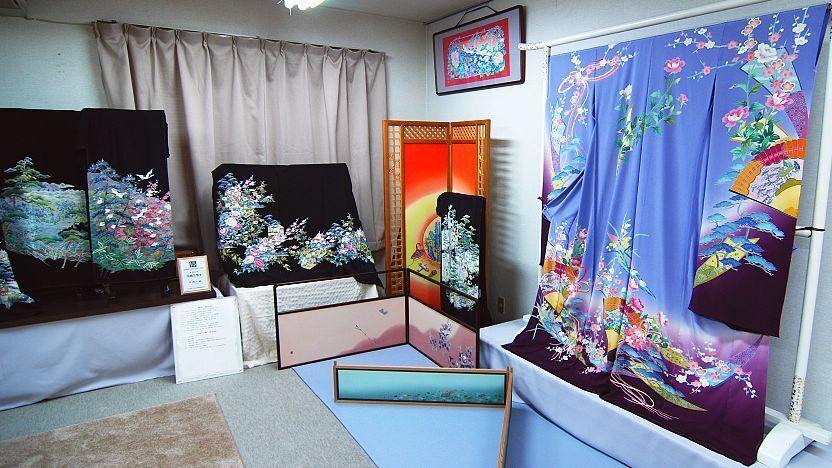Kimono

The kimono (着物) is a traditional Japanese dress. In modern day, it is worn only sparingly or during special occasions such as weddings, tea ceremonies, formal traditional events and funerals. An appropriate style and color of kimono is to be worn depending on the occasion and the person's age and marital status. In recent years, kimono rental services for tourists have become very popular.
| ||
|
Men's kimono usually have more subdued colors and are made typically from matte fabrics. Partly for this reason, it is the women's kimono that generate more interest because their beautiful designs make them art pieces as much as they are garments. The women's kimono is traditionally made of silk, but these days they are also made of polyester. Decoration techniques include embroidery, yuzen painting and dyeing.
Kimono cost from around 10,000 yen for a simple set made of cheap fabric to millions of yen for a luxurious silk outfit with intricate embroidery or yuzen designs. The outfit is accompanied by traditional footwear and a small handbag for women. One price level lower are yukata, a casual version of the kimono popularly worn at ryokan and during summer festivals.

Where to see kimono
Kimono can be a joy to look at just as one might appreciate a piece of art. Here are some destinations where you can see valuable kimono as exhibits or learn about the techniques used to make and decorate them:
Trying on kimono
Dressing up in kimono and other traditional clothing has become a popular attraction in Kyoto and many other tourist destinations across Japan, including Nara, Kanazawa, Kawagoe, Kitsuki, Kamakura and Miyajima. It is also popularly offered at history-themed amusement parks, such as Toei Eigamura in Kyoto or Nikko Edomura.
Typical fees for a basic kimono or yukata start from around 4000-5000 yen and include the obi belt, sandals and accessories. More formal or intricate styles, such as dressing like a geisha or samurai, usually cost around 10,000-13,000 yen. Hair-styling and makeup services, as well as studio and outdoor photography sessions may also be available for an additional fee. Once dressed, you are usually able to go sightseeing in your dress.

Buying kimono
Kimono can be purchased at specialized stores, which are most numerous in Kyoto. They can also be found in department stores and shopping malls across the country. A large number of online stores dealing with new and used kimono have also been set up.
When buying kimono, take into account that maintenance is an issue. Silk kimono, in particular, are difficult to clean and washing without the proper methods might result in damaging the garment. Kimono of polyester material are easier to clean, but you should always check with the merchant the appropriate way of maintaining them.

Questions? Ask in our forum.



